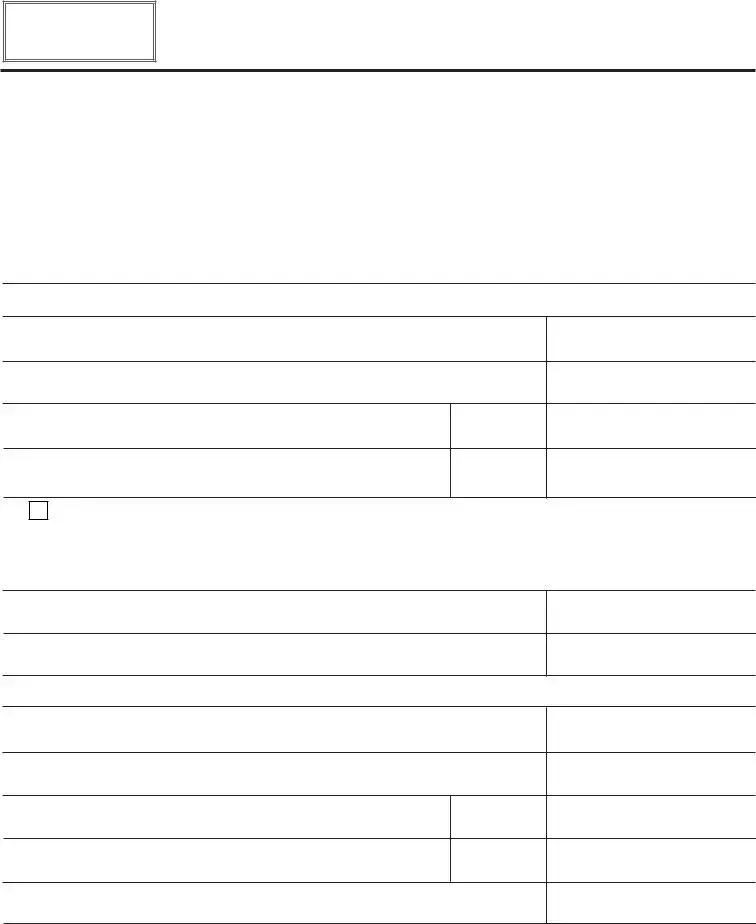The Form 1040 for the IRS is quite similar to the NJ-1040-O due to its fundamental role in the federal income tax filing process. Like the NJ-1040-O, which is specific to New Jersey residents, the IRS Form 1040 serves as the primary income tax form for individuals within the United States. Both forms collect essential taxpayer information, including income sources, tax credits, and deductions which are crucial for determining the taxpayer's liability or refund. However, the IRS Form 1040 applies federally, while the NJ-1040-O is state-specific.
The NJ-1040-ES, the Estimated Tax for Individuals form, shares commonalities with the NJ-1040-O, as both are integral to New Jersey's tax filing requirements. The NJ-1040-ES is used for estimating and paying quarterly taxes, while the NJ-1040-O pertains to opting out of electronic filing for annual returns. Each form serves taxpayers at different stages of their tax obligations, ensuring compliance and facilitating smooth processing by the state's taxation division.
The U.S. 4868 Form, an Application for Automatic Extension of Time To File U.S. Individual Income Tax Return, parallels the NJ-1040-O in providing taxpayers with a specific request mechanism. While the 4868 Form allows taxpayers more time to file their federal returns, the NJ-1040-O lets New Jersey taxpayers request paper filing as opposed to the default e-filing. Both forms are crucial for taxpayers who wish to deviate from standard filing procedures.
New Jersey's GIT/REP-3, the Nonresident Seller's Tax Declaration, also relates closely to the NJ-1040-O form. Both are utilized under specific circumstances by New Jersey residents or parties conducting transactions within the state. The NJ-1040-O serves residents opting out of e-filing for their income tax, whereas the GIT/REP-3 is used by nonresidents to declare income from New Jersey sources, highlighting the state's effort to accommodate diverse taxpayer needs.
The W-2 Form, issued by employers to report employee wage and salary information to the IRS, shares a foundational purpose with the NJ-1040-O. Both are critical for accurately reporting income, albeit in different contexts. The W-2 is necessary for employees to complete their 1040 forms, and similarly, the NJ-1040-O is essential for New Jersey taxpayers who choose to file paper returns, underlining their roles in the broader tax reporting ecosystem.
New Jersey's NJ-1040NR form, for Nonresident Income Tax Return filing, while distinct, shares similarities with the NJ-1040-O. Both cater to specific groups within New Jersey's tax framework - the NJ-1040NR for nonresidents earning in NJ, and the NJ-1040-O for residents opting out of electronic filing. Each form ensures that all taxpayers, regardless of residency status or filing preferences, are accommodated within the state's taxation system.
The IRS Schedule C, used by sole proprietors to report profits and losses from their business, aligns with the NJ-1040-O in its focus on specific taxpayer situations. While Schedule C pertains to federal tax obligations for individual business owners, the NJ-1040-O addresses New Jersey residents' preference for paper filing over electronic submission. Both documents cater to niche aspects of tax filing, ensuring diverse taxpayer needs are met efficiently.
Finally, the Form W-9, Request for Taxpayer Identification Number and Certification, is somewhat analogous to the NJ-1040-O. Although the W-9 is used to provide necessary taxpayer identification information to entities that pay them, aligning with federal requirements, its importance in ensuring accurate tax reporting mirrors the role of the NJ-1040-O in New Jersey's state taxation context. Both forms help streamline tax administration, ensuring accurate reporting and compliance.
